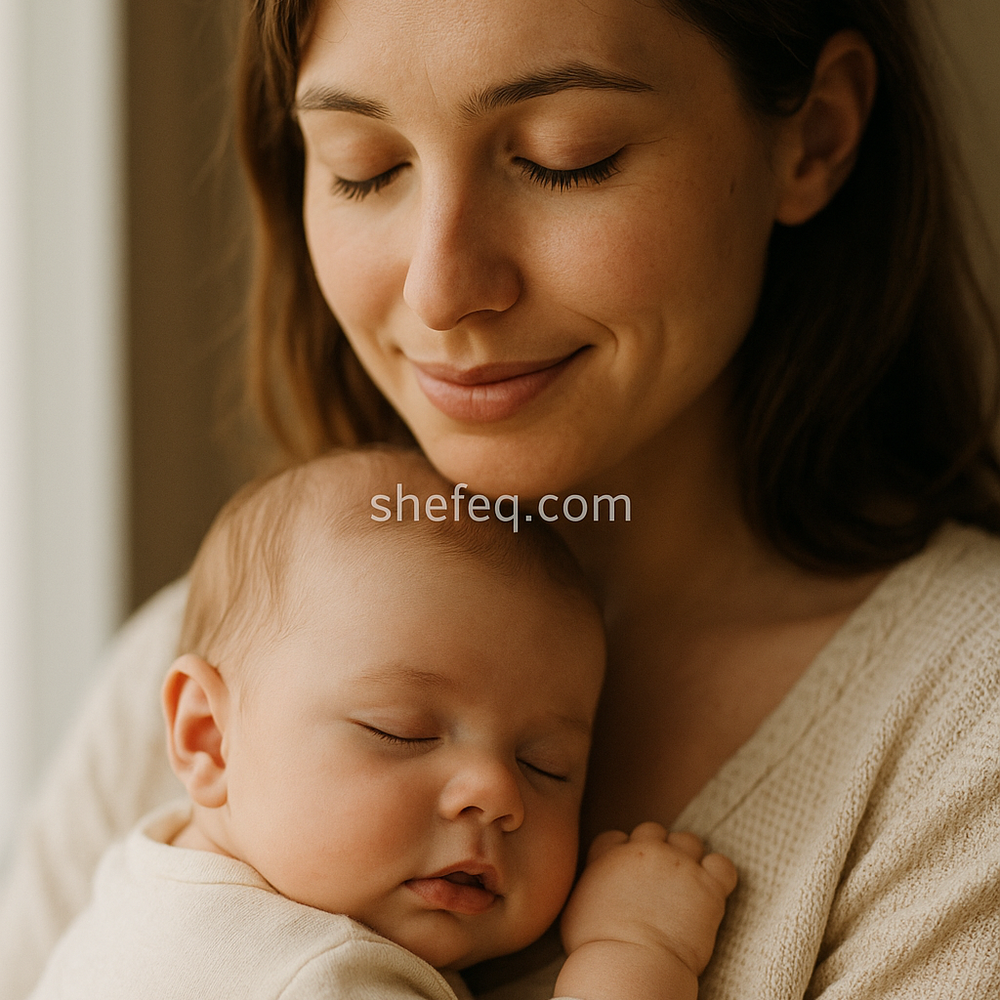INTRODUCTION: Understanding a Baby’s Language — A World Without Words
Babies do not speak. But every glance, cry, and smile is a complete sentence. They communicate not with words, but through emotional language. For a baby, the most important things are safe arms, kind eyes, and consistent care. These become their first and most vital psychological anchors in life.
This article explores the role of emotional bonding in a baby's psychological development, the influence of mothers and fathers, the formation of bodily and brain-based security, and practical steps for raising a mentally healthy child.
CHAPTER I: Emotional Bonding — What Is It and Why Does It Matter?
1.1 Attachment Theory — Bowlby and Ainsworth
-
John Bowlby showed that attachment is a biological need.
-
Mary Ainsworth, using the "strange situation test," identified four types of attachment.
1.2 Types of Attachment
| Type | Description | Influence on the Future |
|---|---|---|
| Secure | Caring, consistent, affectionate mother | Confident, empathetic personality |
| Avoidant | Emotionally distant mother | Difficulty expressing emotions |
| Anxious | Unstable, inconsistent mother | Anxious, insecure personality |
| Disorganized | Frightening or indifferent mother | Trauma responses, self-destructive behavior |
CHAPTER II: The Infant Brain and Emotional Encoding
2.1 Brain Development in the First 3 Years
-
Up to 700 new connections form per second in a baby’s brain
-
Develops: emotional regulation, sense of safety, love hormones (oxytocin)
2.2 The Power of Touch and Eye Contact
-
Mother’s hugs → oxytocin release → calming, bonding
-
Eye contact → sense of security → signals to brain: “I am seen”
-
Skin contact → reduces cortisol (stress hormone)
CHAPTER III: How to Raise an Emotionally Healthy Baby
3.1 “Responding to Crying Is Not Spoiling”
-
In the first year, babies express emotions through crying
-
Responding to crying builds a “safety network” in the brain
-
The “let them cry” method is harmful
3.2 Calmness, Routine, and a Mother’s Breath
-
Daily structure (food, sleep, play) → psychological stability
-
Mother’s smell and voice → familiar and soothing signals
-
Mother — the coordinator of the baby’s emotional regulation
CHAPTER IV: The Role of Fathers and Other Caregivers
4.1 Bonding with the Father and Its Features
-
Father symbolizes strength, boundaries, and safety
-
With the father, the child explores the world and learns courage
-
Fathers must also show love: hugs, eye contact, attention
4.2 Impact of the Entire Family System
-
Relationships with siblings
-
Approach of grandparents
-
Household stress, yelling, conflict → emotional signals for the baby
CHAPTER V: Early Psychological Traumas and Their Consequences
| Trauma | Impact | Consequences in Adulthood |
| Separation | Breaks trust | Loneliness, panic attacks |
| Indifference | Difficulty expressing self | Depression |
| Yelling | Increased anxiety | Guilt |
| Criticism | Sense of worthlessness | Perfectionism, low self-esteem |
CHAPTER VI: The Invisible Bridge Between Mother and Child
6.1 The Power of Connection — Language Without Words
-
Mother understands baby’s needs through looks and cries
-
Baby senses rhythm, energy, even mother’s breath
-
This “bridge” is built through emotional symbols
6.2 Postpartum Depression and Baby’s Psyche
-
Maternal depression → emotional detachment in the baby
-
When the mother is depressed, the baby becomes emotionally “orphaned”
-
Solutions: psychological support, active family involvement
CHAPTER VII: Practical Map — What to Do?
-
Respond, Don’t Ignore
-
Go to the baby when they cry
-
Crying should not be a way to fall asleep
-
Don’t use gadgets for “soothing”
-
Physical Contact — The Strongest Language
-
Hugs, skin-to-skin contact
-
Speak gently and calmly
-
Massage, physical closeness
-
The Power of Play
-
Non-verbal play: smiles, facial expressions
-
Time in front of a mirror
-
Reading and storytelling activate memory and speech
-
Take Care of Yourself
-
Stressed parents = tense baby
-
Parental emotional burnout overloads the child
-
Dedicate at least 1 hour per week just for yourself
CHAPTER VIII: Real-Life Stories
Leyla, 34: “With my first child, I was nervous. I waited for him to stop crying. With the second, I go to him immediately — and he’s growing up calm and confident.”
Teymur, 38, father: “I build our bond through play. 10 minutes on the floor with my son changes the whole evening.”
CONCLUSION: A Baby’s Trust Is Their Future
When a baby looks into your eyes, they don’t just see — they feel. They ask: “Am I safe? Am I heard? Do I matter?”
The answer lies in quiet hugs, a gentle voice, consistent care, and unconditional love. This is the foundation of a mentally healthy and happy human being.
QUESTION FOR READERS: How do you think emotional attention in the first 3 years influences a child’s personality? What do you do to make your baby feel safe? Share your experience in the comments — your story may help another mom feel more confident.

